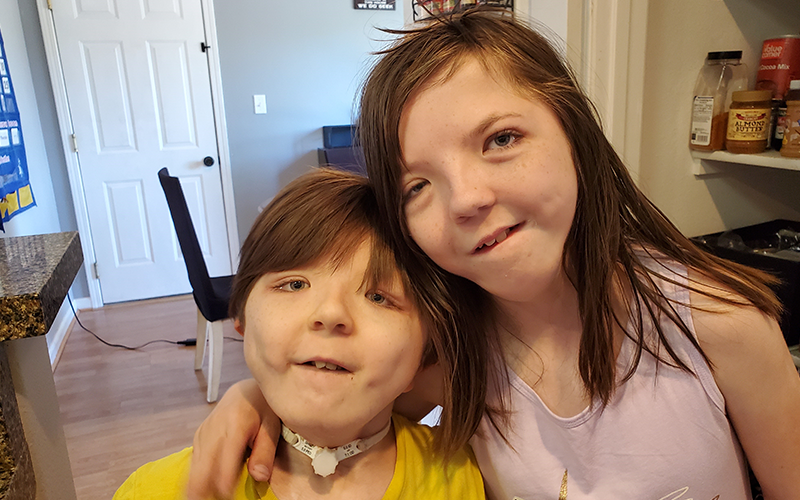September is Craniofacial Acceptance Month in the United States.
Approximately 600,000 people in the United States live with a craniofacial condition – or facial difference. That 600,000 includes two of my children and myself.
We have a rare genetic disorder called Oto Palatal Digital Syndrome (OPD) with Pierre Robin Sequence. This condition involves, among other issues, a small lower jaw that compromises a person’s ability to breathe.
Pierre Robin Sequence is one of the 19 conditions classified as craniofacial by the Children’s Craniofacial Association of America (CCA). Although these conditions differ in severity, the people they affect all have some noticeable facial differences.
The goal of Craniofacial Acceptance Month is to spread awareness about craniofacial issues and facial differences.
Society has come a long way in fostering an environment of acceptance for those who may look different, but it’s clear that we still have a ways to go. Recently, there was a challenge on TikTok, which had parents scaring their kids with mugshot type photos and pictures of people with noticeable facial differences, having them believe that they were face timing with their new teacher, and then filming their reaction for laughs.
Teaching your children to be afraid of someone who looks different, or letting them believe that facial differences are something to be used as the butt of a joke is not only ableist, it’s poor role modeling.
When the movie “Wonder” based on the novel by R.J Palacio, came out in 2018, it sparked the #choosekind movement. As someone with a facial difference, and as the parent of kids who also have facial differences, I was hoping that people would not just choose to be kind, but that they would choose to be educated.
There are lots of ways that people can educate themselves about craniofacial issues, but here is a small list of things that you can practice or pass on to others if you or a loved one has a facial difference.
Don’t presume competence. It has been my experience that some people automatically assume that if you have a visible disability or difference, then your intelligence must also be affected.
Do ask questions. It’s ok to be curious and interested. It’s not ok to stare and make rude remarks. I love it when people ask about my kids, even though questions from the younger kids tend to be blunt. Usually, when I explain our condition, they accept it and move on.
Don’t pull your kids away if they are staring, commenting, or pointing. Instead, use it as a teaching moment and encourage them to say Hi. If you avoid the situation, it can send the message that it’s ok to fear or avoid people who look different.
Don’t try and befriend or be nice to someone with a facial difference for clout. Like anyone else, we don’t like being used or objectified to make someone else feel better about themselves.
People with facial differences (or any visible disability for that matter) have historically been marginalized and discriminated against based solely on the way they look. Things have gotten better over the last few decades, but we still have a long way to go.
